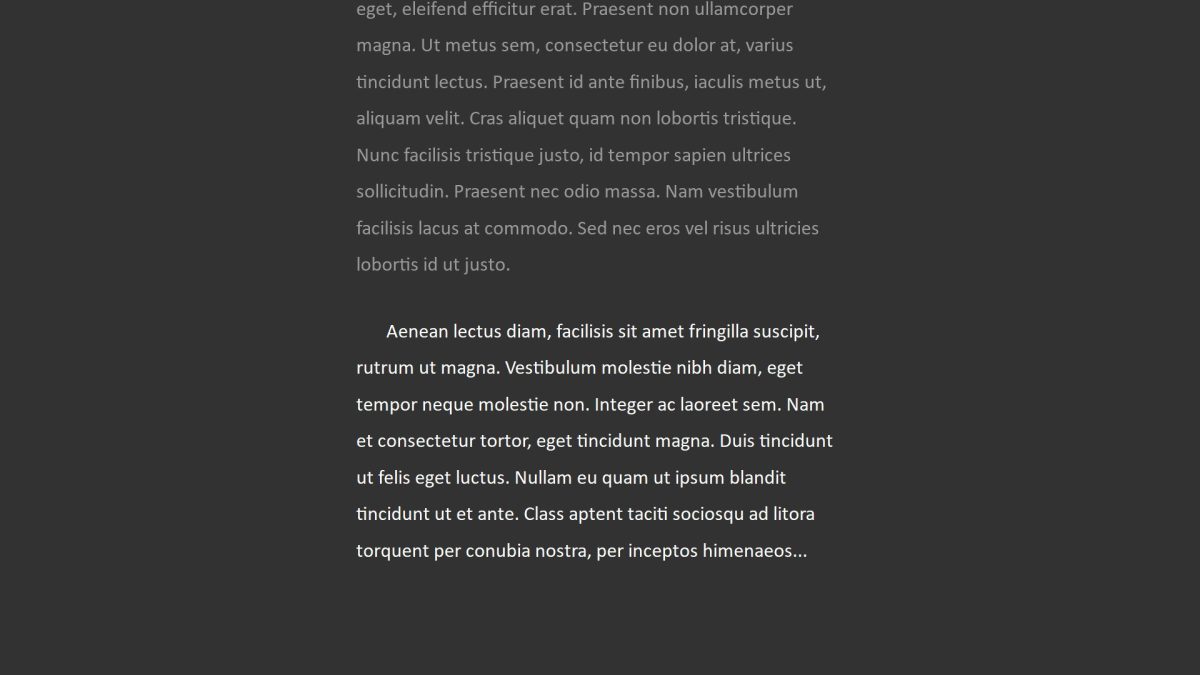How to Use Different Narrative Styles in Your Writing, With Examples
Should I Use First, Second or Third Person Narrative Style in My Writing?

What Is Your Favoured Style?
Which Style do you Favour in Your Writing?
Choosing a Narrative Style for Your Writing
I am going to explain the different written narrative styles and show examples of them in action.
The narrative style you choose for your writing will change the way it reads and also your reader’s perception of it. As writers we are given a wide choice of styles, and if we choose wisely it gives us the power to pull the reader in and whisper secrets to them. Is your character telling their own story? Is it an innocent bystander's account of events? Or perhaps a supreme voice who knows all the characters secrets?
In the following paragraphs I am going to examine some of these styles and also some of the advantages and disadvantages of using them.
Harness the Full Power of Your Words

Examples of First Person Narration
In first person narration where the person telling the story is the central character:
I clearly remember that it was half past two when the phone rang that day. That was the start of my downfall.
An example of first person narration where the narrator is a witness to the main character:
It was November 16th when Llana Stinton had whispered to me, about her big secret. That was the day that I'd found out what she'd done.
First Person
First person narrative style is where the character is relaying their own story. They may be the main character on which the whole story is based or they could be a bystander relaying the main character's tale.
In the two examples you can clearly see the difference between a narrator telling their own story and a narrator whom is merely a witness and teller of someone else's tale.
Disadvantages of First Person
- Starting multiple sentences with 'I' is not pleasing to the eyes.
- Because it is expressing only one person's inner thoughts, it can appear to be a limited viewpoint.
- From the writer's perspective if you want to show that a character is not all that they appear to be, if theirs is the only narrative voice, it can be difficult to show that deception.
Advantages of First Person
- It is an easy way to express innermost feelings and thoughts without them being diluted by a third party narrator.
- You are able to use regional speech patterns and slang in the narration, as the natural thought patterns of the character.
- In the case of the character telling their own story it is believed to come across as more natural than other narrative methods.
Write as if you are the Character

Example of Second Person
You are walking down Teller Street, when a man walks up, and stares at you.
Second Person Narration
Second person narration is a little more complicated and not the first choice of most authors of fiction. It involves the narrator referring to the main character as 'you.' This can pull the reader in to the story, but difficult to hold the reader's interest.
Disadvantages of Second Person
- As a reader it can be hard to read about 'you' experiencing things when clearly you are sitting at home and not in the scene.
- It can be quite repetative to keep this style going through a long period of text.
Advantages of Second Person
- Due to the wording the reader can feel part of the story.
- When dealing with a troubled character this style of narration can provide an opportunity for the character for self confession.
- For tourist guidebooks it provide the reader with a realtime guide to what they they are experiencing.
Second Person Narrative Can be Advantageous on Occasion

Examples of Third Person
Limited omniscience example - 'I would love to go to your party Zander,' he said smiling. All the while, seething he had been cornered.
Omniscient example - He thought he was a true gent and she was a very lucky woman to have him. She wished he would leave, so she could move her lover in.
Objective example - He appeared to be rattled by her sudden appearance, whilst she looked surprised to see him.
Third Person
This narrative style has three basic forms:
Limited omniscience - Where the narrator knows all one character's thoughts, feelings and fears.
Omniscience - Where the narrator knows all there is to know about each character.
Objective - Where the narrator has no additional information on the characters, other than what can be gained from viewing the characters as an outsider looking in on the unwinding tale. The narrator also doesn't pass any judgements or comments on any of the decisions or actions taken within the story.
Disadvantages of Third Person
- It can be difficult to switch between different third party viewpoints and make each character stand out as different.
- As an omniscient narrator the huge power of moving between characters thoughts can be too tempting. For a reader having the thoughts of four different characters all intermingled on one page, can at best be confusing and at worse have them swiftly closing the book.
- Reigning in your own personal opinions and not commenting on the morals of your story can also sometimes be hard.
Advantages of Third Person
- There are multiple variations on the third party style.
- With omniscient narration we can see the inner and outer viewpoint of the character, which is a powerful technique to show what the character is expressing and how that contrasts with what they are really feeling.
- With a little bit of practice it is possible to use multiple characters viewpoints. By using new paragraphs or chapters and giving each character a distinct style of their own, it is possible to deal with various characters using limited omniscient narration.
- The various types of third party narration also allow for as much or as little narrative commentary as the writer desires.
Third Person Provides Various Choices

Test Your Narrative Know How
view quiz statisticsThe Conclusion - What Style Should You Use?
From first to third person style, we find ourselves with a multitude of choices. The best way to choose what is right for your story is to base it upon your main character and main plot line. Although first person perspective is the most popular in modern fiction, there are very distinct advantages with using a third person perspective. The ability to show the characters thoughts and the stark contrast that they present from their outward behaviour is very appealing. Using different chapters to provide your characters with their own spotlight means you can highlight more than one main character.
With a little practice you can move between different styles within your writing. There is no right or wrong, only a choice. Think of your character and choose the style which will breathe life into them, and make them come alive for your reader.
Everything is Seen Through Their Viewpoint

© 2014 Anna Haven





